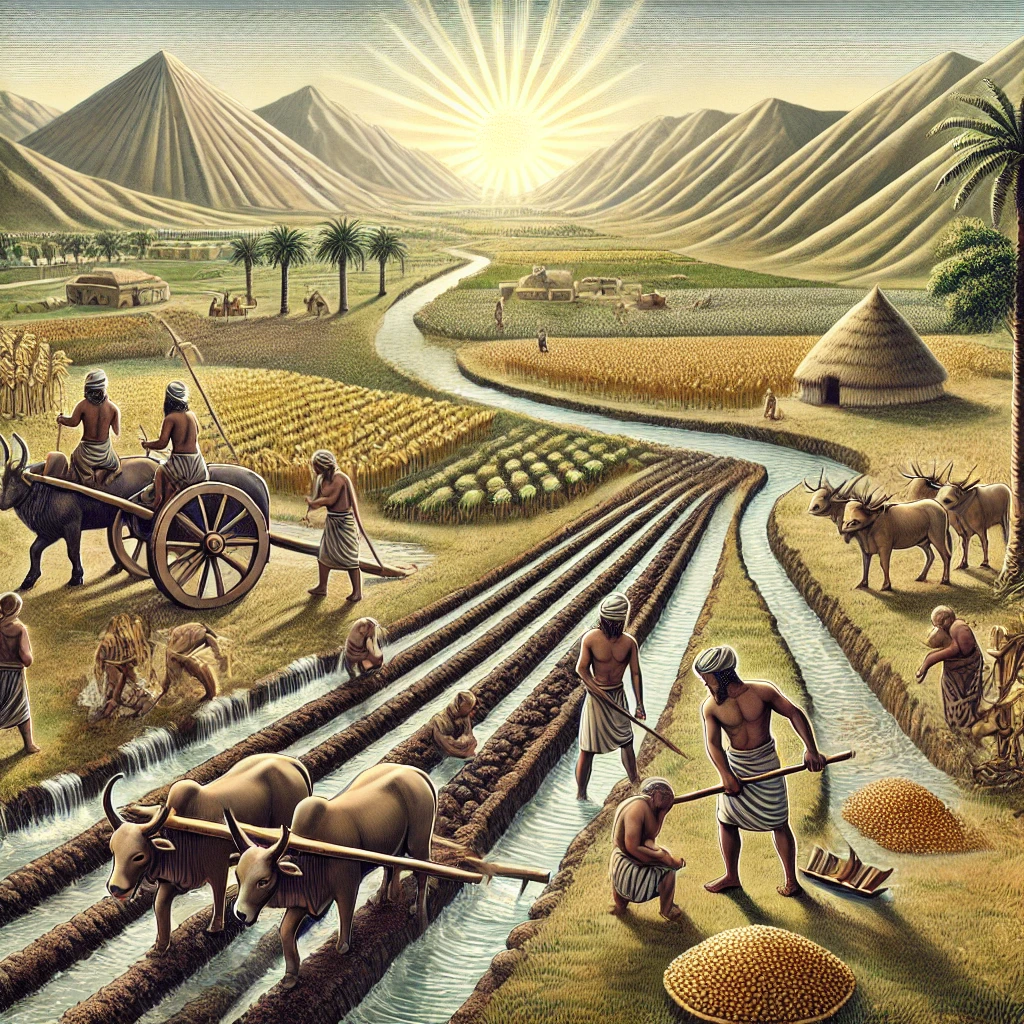The Sumerians revolutionized food production through remarkable innovations in Sumerians agriculture. By developing advanced irrigation systems, they not only enhanced water management but also significantly increased crop yields. Moreover, their practices in crop diversification ensured a sustainable food supply, allowing them to thrive in the challenging Mesopotamian environment. This combination of ingenuity and adaptability fundamentally transformed their agricultural landscape, laying the foundation for future civilizations.
Agricultural Innovations of the Sumerians
Sumerians agriculture revolutionized food production through various innovative techniques and tools. Their advancements played a crucial role in transforming their society. Key innovations included:
- Plows: The Sumerians developed the first plows, made from wood and later reinforced with metal. This advancement allowed for deeper tilling, improving soil management and increasing crop yields.
- Irrigation: One of the most significant contributions to Sumerians agriculture was the sophisticated irrigation systems. They constructed canals and dikes to control water supply from the Tigris and Euphrates rivers, enabling them to cultivate crops in arid conditions.
- Seed Selection: Sumerians practiced selective breeding of seeds, choosing the best specimens for planting. This technique led to more resilient and higher-yielding crops.
- Crop Rotation: By rotating crops, they maintained soil fertility and reduced pest outbreaks. This sustainable practice enhanced food production efficiency.
In summary, these agricultural innovations allowed the Sumerians to thrive in a challenging environment, laying the foundation for future civilizations and significantly impacting agricultural practices worldwide.
Irrigation Systems and their Impact on Yield
The Sumerians agriculture relied heavily on advanced irrigation systems, which played a crucial role in boosting food production. By mastering the management of water resources, they transformed their arid landscape into fertile land.
Key Features of Sumerian Irrigation Systems:
- Canals and Ditches: These structures diverted river water to fields, ensuring a steady supply for crops.
- Reservoirs: Sumerians built large reservoirs to store water, allowing them to manage consumption during dry spells.
- Water Management: Skilled laborers monitored water levels, preventing flooding and ensuring consistent irrigation.
Impact on Crop Yields
The innovation in irrigation led to remarkable increases in agricultural output. Here’s a quick comparison:
| Factor | Before Irrigation | After Irrigation |
|---|---|---|
| Yield per Acre | Low | High |
| Variety of Crops Cultivated | Limited | Diverse |
| Sustainability | Seasonal | Year-round |
In summary, the Sumerians agriculture flourished due to their ingenuity in irrigation, which not only maximized yields but also allowed for greater crop diversity and food security.
Crop Diversification and Sustainable Practices
The Sumerians agriculture system thrived on innovative approaches, with crop diversification playing a vital role in sustainable practices. By growing a variety of crops, the Sumerians mitigated the risks of crop failure and ensured food security. Here’s how:
- Variety of Crops: The Sumerians cultivated various staples, including barley, wheat, and legumes. This not only provided them with essential nutrients but also minimized pest and disease threats.
- Crop Rotation: Implementing crop rotation enhanced soil fertility. For example, they alternated between legumes, which enriched the soil with nitrogen, and grains, maintaining soil health and maximizing yield.
- Resource Management: Sumerians carefully managed water resources using their advanced irrigation systems. This allowed them to effectively support diverse crops, reducing over-reliance on any single crop.
By emphasizing crop diversification, Sumerians agriculture exhibited resilience against environmental changes. This sustainable approach ensured their civilization could thrive in the challenging conditions of ancient Mesopotamia, laying a foundation for future agricultural practices.
Frequently Asked Questions
What agricultural techniques did the Sumerians use to boost food production?
The Sumerians employed advanced agricultural techniques such as irrigation systems, which were crucial in managing water supply from the Tigris and Euphrates rivers. They constructed canals, dikes, and reservoirs to channel water effectively to their fields. Additionally, they practiced crop rotation and used plows made from wood and later bronze to enhance soil cultivation, allowing for better yields of key crops like barley and wheat.
How did the Sumerians utilize livestock in food production?
Livestock played a vital role in Sumerian agriculture and food production. They domesticated animals such as sheep, goats, and cattle, which provided not only meat but also milk, wool, and labor. Utilized for plowing and transportation, these animals significantly enhanced productivity. Additionally, animal dung served as a natural fertilizer, enriching the soil and promoting healthier crop growth, thereby increasing overall food output.
What role did trade play in Sumerian food production?
Trade was essential to Sumerian food production, as it allowed them to obtain crops and resources not available in their region. The Sumerians engaged in trade with neighboring cultures for goods such as timber and metals, which were vital for agricultural tools and construction. The surplus food produced through their efficient farming techniques also became a valuable trade item, enabling them to exchange for other necessities, facilitating a robust economy.
How did the Sumerians’ innovations impact their society regarding food security?
The Sumerians’ agricultural innovations led to increased food production, which significantly impacted their society by ensuring food security. The reliability of food supplies contributed to population growth and the emergence of urban centers, allowing for the development of specialized roles beyond farming. This surplus enabled the Sumerians to establish complex social hierarchies, develop arts and sciences, and foster a thriving culture, ultimately laying groundwork for future civilizations.


